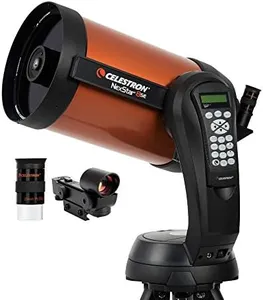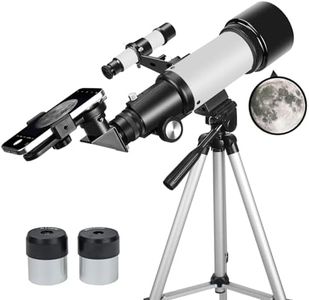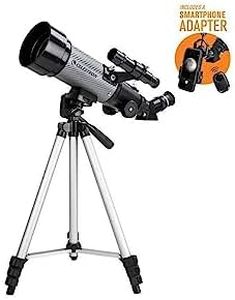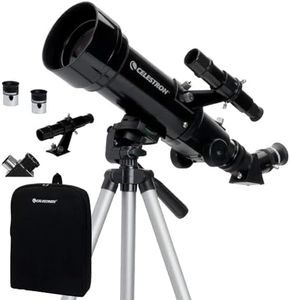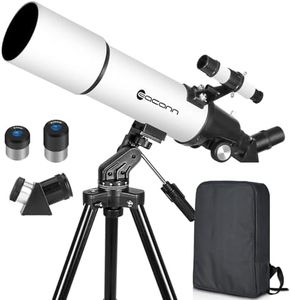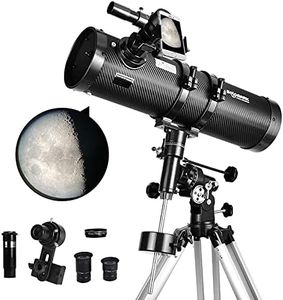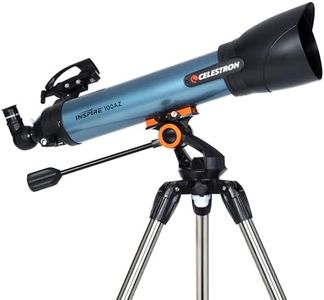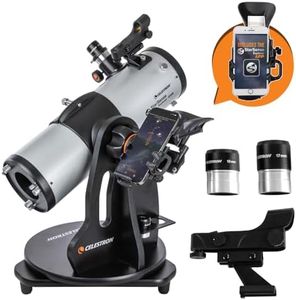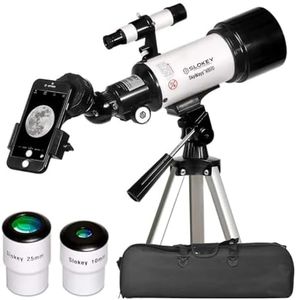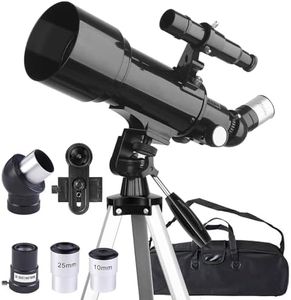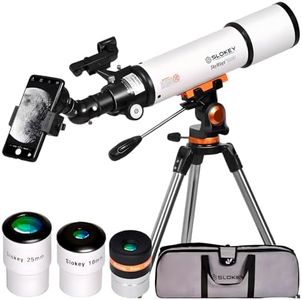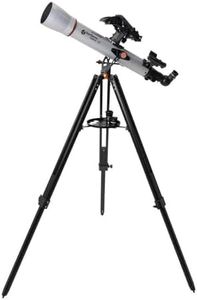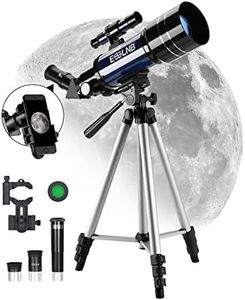We Use CookiesWe use cookies to enhance the security, performance,
functionality and for analytical and promotional activities. By continuing to browse this site you
are agreeing to our privacy policy
10 Best Telescopes For Viewing Planets
From leading brands and best sellers available on the web.Buying Guide for the Best Telescopes For Viewing Planets
Choosing the right telescope for viewing planets can be an exciting journey into the world of astronomy. The key is to understand the specifications that matter most for planetary observation and how they align with your viewing needs. Whether you're a beginner or an experienced stargazer, knowing what to look for in a telescope will help you make an informed decision and enhance your stargazing experience.ApertureAperture refers to the diameter of the telescope's main optical component, which can be a lens or a mirror. It is crucial because it determines how much light the telescope can gather, directly affecting the clarity and detail of the images you see. For planetary viewing, a larger aperture is generally better as it allows you to see more detail on planets like Jupiter and Saturn. Apertures are typically measured in inches or millimeters. For beginners, a telescope with an aperture of at least 70mm (2.8 inches) is a good start, while more serious observers might look for 100mm (4 inches) or more. Consider your viewing environment and portability needs when choosing the aperture size.
Focal LengthThe focal length of a telescope is the distance from the lens or mirror to the point where the telescope forms an image. It is important because it affects the magnification and field of view. A longer focal length provides higher magnification, which is beneficial for viewing planets. Focal lengths are measured in millimeters. For planetary observation, a telescope with a focal length of 900mm or more is ideal, as it allows for detailed views of planets. However, if you prefer a wider field of view for other celestial objects, a shorter focal length might be more suitable.
MagnificationMagnification is how much larger a telescope can make objects appear. It is determined by the combination of the telescope's focal length and the eyepiece used. While high magnification is tempting, it's important to remember that too much magnification can lead to blurry images if the telescope's aperture isn't large enough to support it. For planetary viewing, a magnification of 100x to 200x is often sufficient to see details like the rings of Saturn or the bands of Jupiter. Choose a telescope that allows you to switch eyepieces easily to adjust magnification based on your needs.
Mount TypeThe mount is what holds the telescope and allows you to point it at different parts of the sky. It is important because a stable mount ensures clear and steady views. There are two main types: altazimuth and equatorial. Altazimuth mounts are simpler and easier to use, making them great for beginners. Equatorial mounts are more complex but allow for easier tracking of celestial objects as they move across the sky, which is beneficial for planetary observation. Consider how comfortable you are with setting up and using the mount when making your choice.
PortabilityPortability refers to how easy it is to transport and set up the telescope. This is important if you plan to take your telescope to different locations for better viewing conditions. Smaller telescopes are generally more portable and easier to set up, but they may have smaller apertures. If you have a permanent setup at home, a larger, less portable telescope might be suitable. Consider your lifestyle and how often you plan to move your telescope when deciding on the right balance between size and portability.


